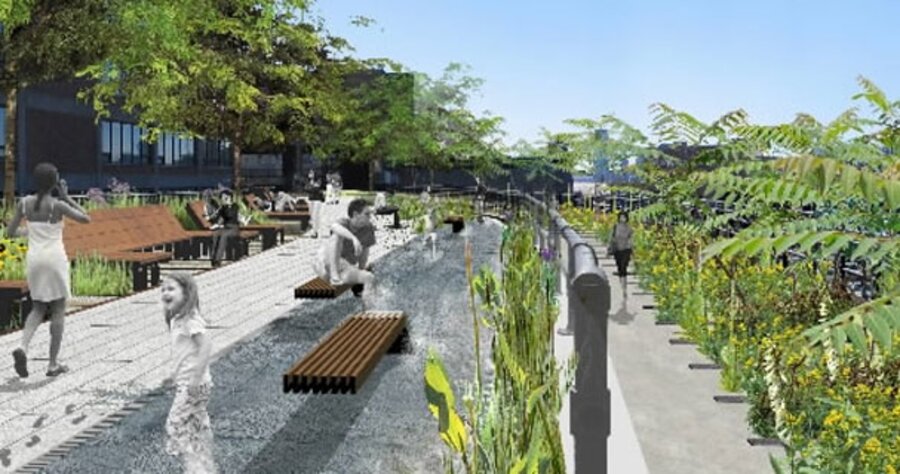New York City rail line becomes park
Loading...
| New York
Joshua David remembers vividly the first time he stepped out onto the rusted-over elevated railway track that snaked above Manhattan.
“It was this incredible, hidden landscape that was invisible from the street that just stretched for blocks and blocks and blocks — as far as you could see,” he recalls. “All these grasses and wildflowers and trees, hidden like a secret garden in the middle of the city. And it just made your heart rise.”
There was no public access to the shock of green above the rusty underbelly of the High Line railway. With wrecking balls looming, Mr. David helped lead a campaign to turn the abandoned track, winding through a desolate corner of the city, into a public park.
Now, with the first section of the $170 million High Line park set to open by the end of the year, the city’s residents are about to get their opportunity to see whether the project’s designers have succeeded in maintaining the sense of wilderness that so many found so evocative.
“We wanted to hold on to the magic of this landscape,” architect Ricardo Scofidio says. “There is that edge of vulnerability between this society that we have perfected and these small blades of grass that are able to split open sidewalks and grow in the cracks.”
Decades before the greenery overtook the track and the surrounding warehouses developed a ghost-town feel, the High Line once carried cargo trains directly through factories and other buildings.
Built following a 1929 agreement, the elevated rail — once 13 miles long — carried milk, meat, vegetables and manufactured goods through the city.
In the 1950s, when truckers started carrying the same goods through the city and beyond, rail traffic dwindled. And in 1980, the final High Line train stopped running.
Shrunken to span just 22 blocks along the far west side of midtown Manhattan from Hudson Yards to the Meatpacking District, the tracks grew into wilderness over more than two decades of disuse.
When developers sought to demolish what they thought of as an eyesore, the campaign to make the railway into a park began.
The aging metal backbone of the structure stayed largely untouched. Rather than installing a straightforward promenade on the rail bed, Mr. Scofidio and others designed walkways made from multiple, blade-like concrete panels that are interspersed in places with greenery and flowers.
“It’s almost a ying-yang between pavement and planting, and I hope that one will have the feeling that if you didn’t do anything the plants would just continue to grow and take over again,” Scofidio says.
That canopy of green is still present on the northernmost section of the 1.5-mile-long railway, which remains untouched by the project renovations while advocates continue to push for its inclusion in the park.
There, wildflowers sprout among the rusting rails and slats, and the uneven growth makes hiking boots more appropriate than office pumps.
In contrast, the designs for the other two sections of the railway — currently being renovated — reveal a more populated landscape.
Unveiled in detail for the first time this summer, the artist renderings show joggers running on a metal walkway above greenery, pedestrians lounging on giant steps and children walking by shrubbery as tall as their heads.
Amanda Burden, chairwoman of the city Planning Commission, says the project — financed mostly by the city — will preserve the nearby art gallery district, attract tourists and provide for affordable housing in the area.
In a neighborhood where property owners once sought to have the railway torn down to help real estate values, landlords now brag to potential tenants about proximity to the railway.
The new High Line will not be quite as wild, quite as overgrown and mysterious as its previous incarnation. But David insists the shift is not quite bittersweet.
“It couldn’t be preserved just to be under glass as something nobody touched,” he says. “The only real alternative to the path that we took was to have it be torn down. This was the way to keep it and make it something all New Yorkers could enjoy for years to come.”





